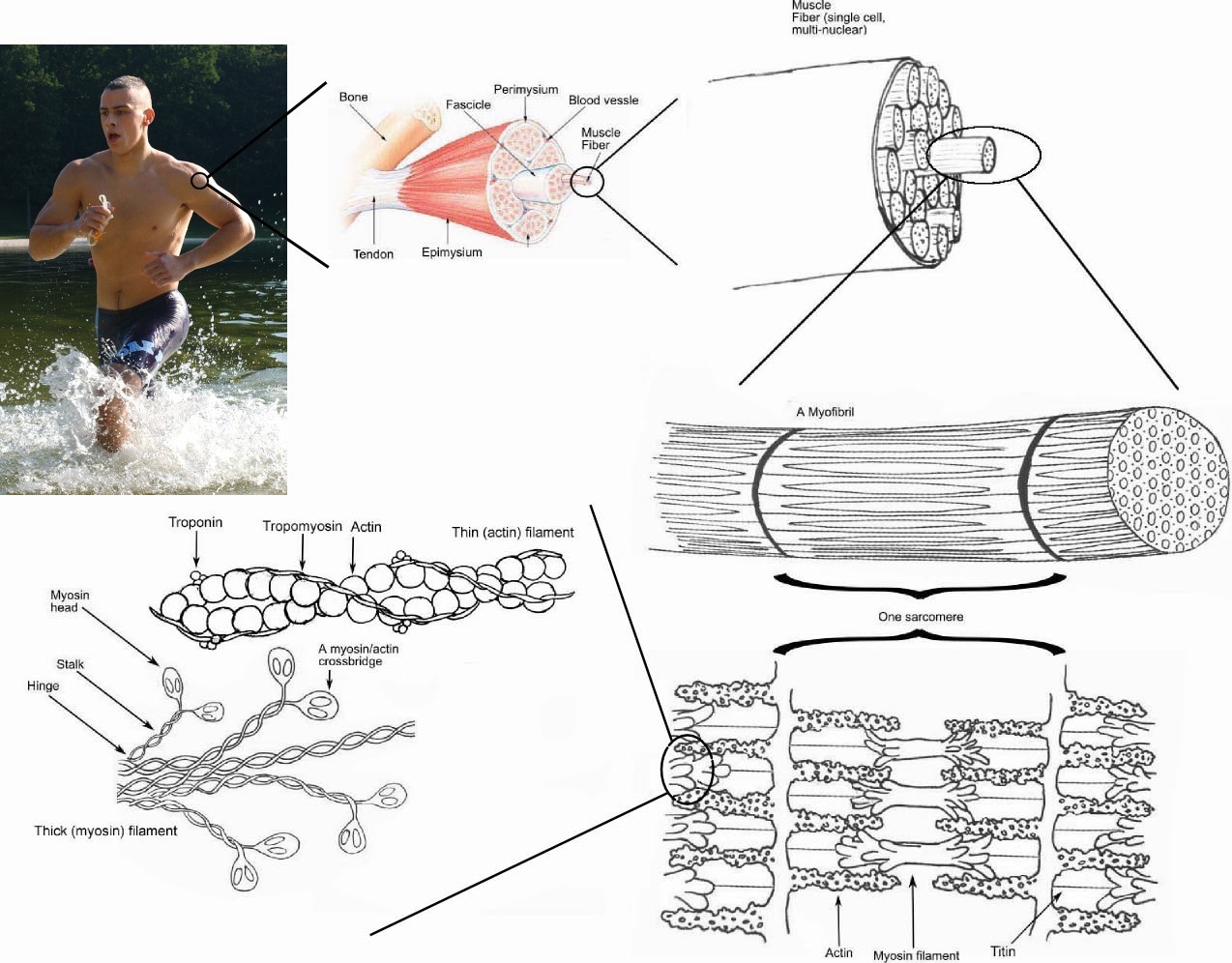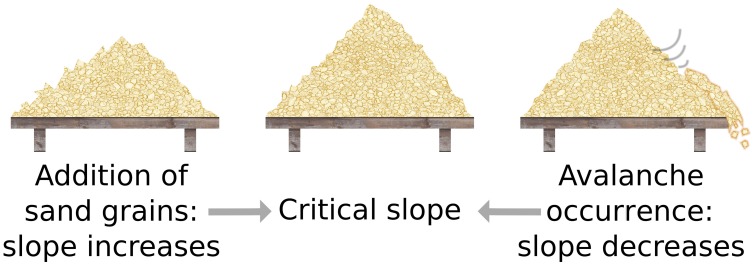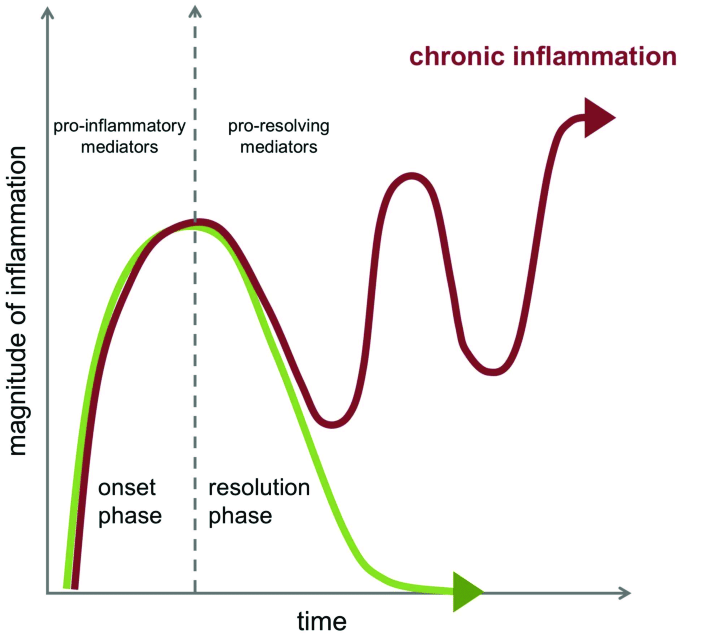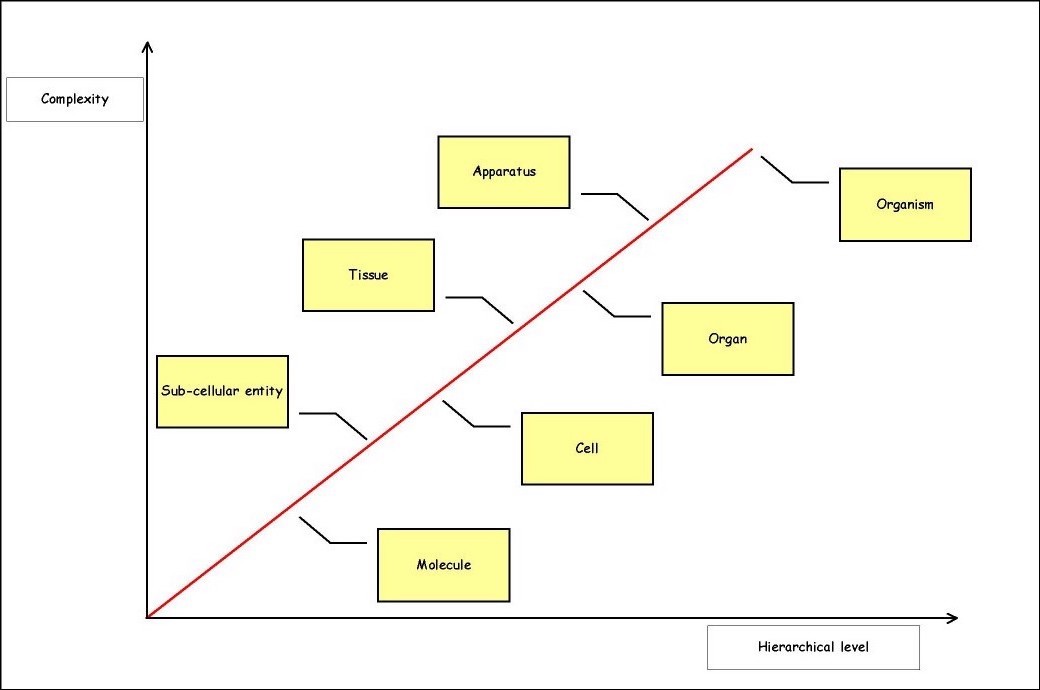Part 1 of this series discussed the basics of metastatic disease.
Part 2 discusses features of normal human biology that are important in understanding cancer and metastases. Click here for the summary for nonscientists.
To understand cancer and metastases, we have to understand features of normal human life that make us different from sophisticated machines and that are altered during the malignant process.
1. Life is a complex system, not a sophisticated machine.
Life is a complex system in which the properties of the whole are greater than the properties of the sum of the parts; humans are not just sophisticated machines (Kauffman 2019). These extra properties are due to interactions between the parts that cannot be predicted by studying the individual parts (Pernick 2017a). For example, motion is due to the interactions of myosin and actin proteins in muscles, but studying these proteins does not help us understand how people walk and run (Kane 2015).

The whole is greater than the sum of its parts: studying the individual proteins responsible for muscle contraction gives us little insight into the properties of the motion that they create. Image source: Wikipedia
2. Human life has properties of self-organized criticality with foreseeable catastrophic failures.
Human life has properties of self-organized criticality (Bak 1996), which means that minor disturbances to biological networks typically cause network changes that have only a minor impact but rarely propagate throughout our bodies to cause catastrophic network failures. This has been analogized to adding grains of sand to a sandpile. Each grain causes internal structural changes to the sandpile, although this may not be readily apparent. Ultimately, one unremarkable grain of sand will cause the sandpile to collapse.

The sandpile analogy of self-organized criticality (Hesse 2014): the addition of grains of sand, one at a time, usually has a minimal impact but eventually causes an avalanche and the collapse of the sandpile.
3. Living systems are designed to reuse existing networks in different ways.
Our evolutionary history began as a single celled organism whose main function was to reproduce rapidly and continuously, while subject to controls that halted reproduction under adverse conditions. In essence, these cells had toolkits of genes and adaptations important for the survival of the organism (Davies 2011). Since the toolkit for cell division was so reliable, we evolved to become larger and more sophisticated, in part by reusing that toolkit in different ways and under different conditions (Mireles 2018). For example, the toolkit for cell division is triggered frequently, not only during embryogenesis (Brantley 2021) but also during fetal and childhood growth, to repair damaged tissue and to replace cells with short lifespans in the bone marrow and gastrointestinal tract (Richardson 2014).
Cell reproduction (mitosis)
Reusing well established and relatively error free networks is a logical evolutionary choice, emulated by the automobile industry and the military, who also reuse standard platforms; however, in humans, as more sophisticated control systems are added to start, stop and coordinate changes affecting these toolkits, the control systems themselves become more vulnerable to errors, leading to dysfunctions in the use of the toolkits (Davies 2011, Trigos 2018).
4. The normal process of activating inflammation also activates the process of turning it off.
In normal (physiologic) settings, the process of activating inflammation also triggers the process of turning it off; this feature is called resolution. Resolution is important because chronic (long term) inflammation may cause bystander damage to tissues and promote instability in other networks (Pernick 2021).
How does resolution operate in the inflammatory system? The inflammatory response consists of a coordinated program to facilitate tissue repair and kill foreign microorganisms. Physiologic triggers of inflammation also simultaneously initiate the process of resolution (Serhan 2005). As the trauma is repaired or the threat from foreign organisms subsides, the resolution process causes networks to revert toward their initial states (Sugimoto 2016).

The processes of inflammation (red line) and resolution of inflammation (green line) begin simultaneously; if the resolution is not effective, inflammation continues indefinitely. Image source: Barnig 2019
5. Normal cells and physiologic processes have malignant features.
Normal cells and physiologic processes have features that may be "hijacked" during malignant transformation and play a role in metastatic disease:
- Cell division occurs during embryogenesis and later in life for growth, repair and replacement of cells and tissues.
- Cell migration occurs during embryogenesis as cells from different lineages migrate over long and short distances throughout the body (Reig 2014, Kurosaka 2008), including in the nervous system (Cooper 2013). Migration also occurs during tissue repair and inflammation (Trepat 2012).
- Inflammation, a common process, promotes the migration of white blood cells to a region (Chen 2017) and encourages blood vessel formation, which sustains tissues and cells (Walsh 2001, DiPietro 2016).
- Stem cells in various tissues (Zakrzewski 2019) undergo developmental changes to eventually become mature cells, but along the way, they have different degrees of cell differentiation, which may resemble malignant cells (Rossi 2020).
6. Living systems arise based on hierarchies, in which changes occur in a nonlinear way through bursts of activity.
Living systems arise based on hierarchies, in which a combination of agents (genes, proteins, networks) at one level becomes an agent itself at the next level. Hierarchies can be structural or functional. Structural hierarchies include the transcription and translation of DNA to produce proteins, proteins interacting to form organelles, clustering of organelles to create cells, cells combining to form tissues, tissues forming organs, organs forming systems and systems working together to form individuals (Holland 2014).

Humans are complex hierarchical systems consisting of many levels of anatomical organization that interrelate with each other to form networks of growing complexity (Grizzi 2005).
In a similar way, a biologic network can be considered to have a specific function, such as adding a phosphate molecule to activate or inactivate a protein. Functional hierarchies arise when multiple networks work together to contribute to a more general function, such as metabolizing a substance. Networks with these functions then cooperate to create broader cell functions such as mitosis (cell reproduction) or apoptosis (programmed cell death), which can then work together at a higher level, to complement the physical hierarchies that form cells or create organisms.
Hierarchies explain why biological change occurs through bursts of activity, not through gradualism. Changes in a single pathway initially affect the hierarchy that it creates, but because this is also an input to another hierarchy, that system can also change. Thus, changes at the bottom of this pyramid can percolate and affect larger changes at the top, although cells and the hierarchies within and between them are typically relatively stable (Kauffman 1993).
Part 3 will discuss how these features are altered during the development of cancer and metastases.